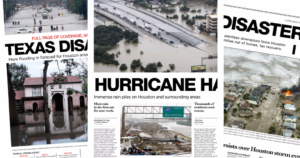Missteps in advertising, marketing and on social media are highly visible. The Dove ad from earlier this month? How about Adidas’ “Congrats, you survived the Boston Marathon” email? Or when Cheerios sent out a nice-enough tweet that many perceived to exploit Prince’s death? As my colleague Nicole Lasorda wrote in a blog post back in January, Does This Tweet Make Me Look Insensitive?, it can be difficult for brands to recover.
As media relations professionals, however, we must be vigilant with our activities behind the scenes as well. When we have clients whose expertise is relevant to delicate or serious moving news stories, it can be rather challenging to insert them into the conversation without sounding opportunistic.
Perhaps you have an expert on mass shootings, or sexual assault, or wildfires or hurricanes. While ill-timed or ill-conceived pitches are generally not visible to the public (although sometimes reporters do share bad pitches with the world), they can reveal a PR practitioner’s inexperience, or worse yet, ignorance. Burning a bridge with an important journalist can create long-term problems for you and your client.
This type of dilemma comes up regularly at Buchanan Public Relations, and while there is no all-purpose answer, here are a few guidelines to follow before hitting “send.”
1. Victims and destruction come first.When a major story first breaks, for example Hurricane Harvey, the media inform the public of how many people have died or sustained injuries, as well as the extent of damage to homes, businesses and the like. Do not pitch your expert at this time.
2. Prepare your pitch. While you wait, reach out to your client to see which expert can talk about what angle. Can they explain a scientific report to a reporter? Were they involved in cleanup and recovery efforts after Hurricane Katrina or Superstorm Sandy? Having a pitch written and approved—and knowing your expert’s availability for interviews—ahead of time will allow you to move swiftly when the time is right. You’re still not pitching at this point.
3. Monitor the news cycle. Media coverage of the victims and destruction doesn’t always have a clear end-point. As the crisis unfolds, PR professionals need to monitor the news cycle. You’ll be able to sense a shift in the coverage as reporters start moving on to new angles. Perhaps the story has transitioned to water quality issues post-hurricane or how small businesses can secure loans to rebuild. Once you see the shift, this is when you pitch.
4. Pitch with sensitivity and patience. Your pitch should offer specific expertise and clearly articulate what your client can offer the reporter in relation to his or her beat. But, do your research, especially if a reporter is on-the-ground in Houston covering people living in Red Cross shelters versus a reporter behind a desk in New York writing about ways other at-risk cities can prevent flooding issues. Pitch, but be smart about it.
5. Sometimes background is best. Yes, we all want to see our clients get some ink on important stories in top news outlets. However, sometimes we pitch an expert on background alone so that the reporter doesn’t feel like we’re reaching out just to get publicity for our client. We’ve seen reporters be receptive to this, and we position it to clients as all-important relationship-building. Now you can pitch with gusto.